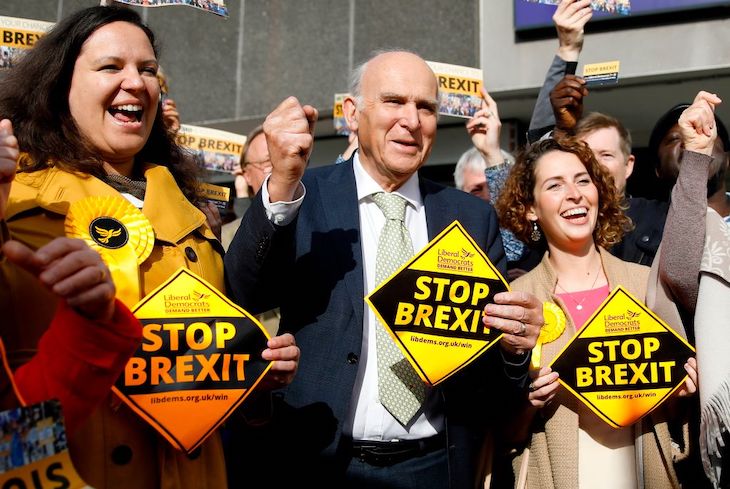Last night, there was shock across Westminster as a new poll by YouGov asking people how they would vote in the next general election showed that the Lib Dems were the most popular party in the UK. Of those asked, 24 per cent said they would vote for the Remain party, followed by 22 per cent for Nigel Farage’s Brexit party, and 19 per cent opting for the Conservatives and Labour respectively.
In a blog post introducing the poll, YouGov’s political research manager, Chris Curtis, said that it was only the second time in 19 years that either Labour or the Conservatives were not in first place in a YouGov survey. The last time this occurred was in 2010, at the height of Nick Clegg’s popularity following the general election debates.
Recently, Change UK, the Lib Dems and the Greens have been competing against each other to see who can become the party of Remain in the UK. Thanks to the Lib Dems’ impressive showing in the European elections last week, there is an increasing view that they are the party which can now claim this prize. The fact that Change UK MPs have been making overtures towards the Lib Dem leadership contender, Jo Swinson, shows that even they accept her party is now the standard-bearer of the Remain cause. And, if voters continue to shun the two main parties and cast their votes along Remain and Leave lines, then you can expect to see the Lib Dems continue to gain in the polls ahead of a general election.
But before we begin rolling out the yellow bunting for a Lib Dem in Number 10, it’s worth remembering that the usual caveats about polls apply. This is only one survey, and could be either an outlier that underestimates or overestimates public support and turnout for the political parties, or simply reflects a temporary surge for the Lib Dems that will eventually subside.
As it happens, events have recently aligned in the Lib Dems’ favour in multiple ways, which could explain their bump in the polls. First, the party had a strong showing in the local elections, where they benefited from being the only major party to back a second referendum – as Change UK were not able to take part. Then, they finished in second place in the European elections and following the result, Vince Cable then announced that he was stepping down, beginning a leadership race between Swinson (who announced her candidacy on Question Time last night) and Ed Davey. All three of these events have given the Lib Dems far more coverage in the national media than they would usually receive, and could explain why they are the forefront of the public’s mind.
Until we receive more polling which reflects this massive upending of the Westminster status quo, it’s therefore probably best to take these results with a pinch of salt. One area where the poll could make a difference though is in Peterborough, where a by-election takes place next week following the ousting of the Labour MP Fiona Onasanya, who was found guilty of perverting the course of justice. In the 2017 general election, the Lib Dems only received around 1,500 votes in the Peterborough constituency, and the area voted 60 per cent to Leave in 2016 – not an area you would expect the party to do particularly well. This new polling shows that while the Brexit party still remains the favourite to win, both Labour and the Conservatives should watch their backs.







Comments